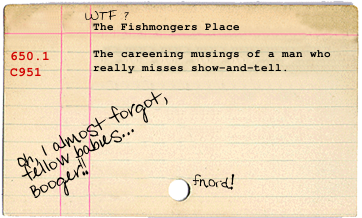 Anyone who has known me long enough knows that I was promoting the idea of converting bodies into gemstones long before it became an actual commercial option. And I'm fascinated with the potential of a gravestone as a place for recording a final message, whether as a traditional stone engraving
Anyone who has known me long enough knows that I was promoting the idea of converting bodies into gemstones long before it became an actual commercial option. And I'm fascinated with the potential of a gravestone as a place for recording a final message, whether as a traditional stone engraving (my choice, here), or as audio or video media builtinto the stone. Stories of ashes being sprinkled, or shot into orbit, or placed into fireworks (a particularly spectacular concept, which a former co-worker claims to have done for a deceased friend), fire my imagination. In Larry Niven's book, Destiny's Road, he speaks of a potassium-starved world where bodies are planted with fruit tree saplings, in an interesting twist on the old story of indians planting their crops with a decaying fish.
(my choice, here), or as audio or video media builtinto the stone. Stories of ashes being sprinkled, or shot into orbit, or placed into fireworks (a particularly spectacular concept, which a former co-worker claims to have done for a deceased friend), fire my imagination. In Larry Niven's book, Destiny's Road, he speaks of a potassium-starved world where bodies are planted with fruit tree saplings, in an interesting twist on the old story of indians planting their crops with a decaying fish. But I'd never before come upon the idea of green burials. It seems to be catching on in Britain, but is only showing up in a few pockets in The States. The idea is to bury our unembalmed remains in biodegradable caskets or shrouds, in the midst of a wooded area. We therefore remain a part of natural cycles, even after death. Some expect these areas to eventually take on the characteristics of sacred woodlands.
But I'd never before come upon the idea of green burials. It seems to be catching on in Britain, but is only showing up in a few pockets in The States. The idea is to bury our unembalmed remains in biodegradable caskets or shrouds, in the midst of a wooded area. We therefore remain a part of natural cycles, even after death. Some expect these areas to eventually take on the characteristics of sacred woodlands.The policy on grave markers vary at these sites. At theSouth Downs Natural Burial Site, for instance they allow no permanent gravestones or markers. Coordinates of burials are maintained in a central location, along with a "Book of Remembrance". Since the site is a woodland restoration, memorial plantings designed to support that process are also allowed. This is the major drawback for me. I'm still kinda hung up on the idea of a durable gravestone marking the site of my burial. But I _do_ like the idea of not being embalmed, and just becoming a part of the soil. I wonder how the potentials for water supply contamination and the like are handles? Or is the fear of contamination by the dead just another superstitious dread with only minimal grounding in reality?


No comments:
Post a Comment